The 2020 MLB draft, to be held June 10 and 11, will be unlike any other. Because of the coronavirus pandemic, the draft will be conducted remotely and limited to just five rounds, down from 40 in 2019. Teams will be able to sign an unlimited number of undrafted players, at a price of $20,000.
Additionally, college and high school prospects had their spring seasons cut short or eliminated altogether, leaving MLB teams with much less information on the players than they typically would have.
Here is a guide for all 30 teams, with each organization's greatest needs, the best fits in the draft, each team's typical approach, a list of its picks this year, where each farm system ranks and more.
Teams are listed in draft order.
Watch the 2020 MLB draft on ESPN & the ESPN App
Wed., June 10: Round 1 starting at 7 p.m. ET (ESPN)
Thu., June 11: Rounds 2-5 starting at 5 p.m. ET (ESPN2)
Jump to a franchise:
American League
BAL | BOS | CHW | CLE | DET
HOU | KC | LAA | MIN | NYY
OAK | SEA | TB | TEX | TOR
National League
ARI | ATL | CHC | CIN | COL
LAD | MIA | MIL | NYM | PHI
PIT | SD | SF | STL | WSH

Detroit Tigers
Where their farm system ranks: Sixth
Biggest system strengths: Impact starting pitchers
Biggest system needs: Impact hitters
Matt Manning, Casey Mize and Tarik Skubal are all comfortably in my top 100 prospects and all could conceivably pitch in the big leagues in 2020 for Detroit if service time were no consideration. Beyond that, everybody agrees on Riley Greene being a potential impact bat, but from there it's either split opinions or role player types.
How they typically draft: Power hitters and power pitchers
Detroit likes power hitters, power pitchers and SEC performance. Asa Lacy fits that to a T, which is why he's considered a possibility for the No. 1 pick.
Best fits: Spencer Torkelson, Asa Lacy, Austin Martin
2020 draft picks: No. 1, No. 38, No. 62, No. 73, No. 102, No. 132
Past five first-round picks: OF Riley Greene (2019); RHP Casey Mize (2018); RHP Alex Faedo (2017); RHP Matt Manning (2016); RHP Beau Burrows (2015)

Baltimore Orioles
Where their farm system ranks: 17th
Biggest system strengths: Improved depth
Biggest system needs: Power bats
GM Mike Elias' rebuild is well underway, with trades to beef up the farm system, a kick start of the Latin America program and a solid first draft. Like many clubs with a progressive bent to player development, the O's prefer to spend their biggest amounts of capital for hitters and buy pitchers in bulk.
How they typically draft: Up-the-middle bats
The Orioles' first eight picks last year were hitters and all of them either project to play up the middle at the higher levels of pro ball or could reasonably fill in there.
Best fits: Austin Martin, Nick Gonzales, Nick Bitsko
2020 draft picks: No. 2, No. 30, No. 39, No. 74, No. 103, No. 133
Past five first-round picks: C Adley Rutschman (2019); RHP Grayson Rodriguez (2018); SS Cadyn Grenier (2018); LHP DL Hall (2017); RHP Cody Sedlock (2016)
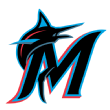
Miami Marlins
Where their farm system ranks: 10th
Biggest system strengths: Upper-minors impact talent
Biggest system needs: Catchers
The Marlins' rebuild is moving in the right direction and the upper minors are full of highly rated prospects who should play in Miami in the next 12 months: Jazz Chisholm, Sixto Sanchez, Edward Cabrera, JJ Bleday, Jesus Sanchez, Monte Harrison, Lewin Diaz, Trevor Rogers, Braxton Garrett and Nick Neidert.
How they typically draft: Beneficial demographics
The Marlins' first draft under scouting director D.J. Svihlik skewed toward hitters early, and mostly college ones, which is the best demographic to be leaning toward.
Best fits: Austin Martin, Spencer Torkelson, Asa Lacy
2020 draft picks: No. 3, No. 40, No. 61, No. 75, No. 104, No. 134
Past five first-round picks: OF JJ Bleday (2019); OF Kameron Misner (2019); OF Connor Scott (2018); LHP Taylor Rogers (2017); OF Brian Miller (2017)

Kansas City Royals
Where their farm system ranks: 23rd
Biggest system strengths: Upper-minors arms
Biggest system needs: Infielders
After the 2018 draft heavy on college arms, who have all worked out pretty well so far, that area is the strength of the Royals' system, alongside top prospects and 2019 second overall pick Bobby Witt Jr.
How they typically draft: Big and/or toolsy prospects
The Royals were long one of the most risk-seeking teams in the draft, taking shots on prep players more than almost any other club. Then they steered heavily toward college players in 2018 and, other than top pick Witt Jr., again in 2019. Still, all of these college players either had big tools (Brady McConnell) or were big (all of the pitchers were 6-foot-4 or taller).
Best fits: Asa Lacy, Zac Veen, Nick Gonzales
2020 draft picks: No. 4, No. 32, No. 41, No. 76, No. 105, No. 135
Past five first-round picks: SS Bobby Witt Jr. (2019); RHP Brady Singer (2018); RHP Jackson Kowar (2018); LHP Daniel Lynch (2018); LHP Kris Bubic (2018)
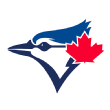
Toronto Blue Jays
Where their farm system ranks: 20th
Biggest system strengths: Lower-minors depth
Biggest system needs: Outfielders
The Jays have lots of solid depth currently in the lower minors, mostly from the past few drafts and international signing classes. While there's a solid group of pitchers almost ready to help the big league team, there's not much in the way of everyday-type prospects with MLB-ready talent in the outfield.
How they typically draft: Value
Value is the term I use for clubs that don't have a clear preference and could take someone from any of the four major demographics if their internal evaluations support the move. The Jays have a new scouting director this year, but in the past they haven't leaned too heavily on any one demographic, not hesitating to take a prep bat if there's sufficient track record and upside.
Best fits: Zac Veen, Nick Gonzales, Max Meyer
2020 draft picks: No. 5, No. 42, No. 77, No. 106, No. 136
Past five first-round picks: RHP Alek Manoah (2019); SS Jordan Groshans (2018); SS Logan Warmoth (2017); RHP Nate Pearson (2017); RHP T.J. Zeuch (2016)

Seattle Mariners
Where their farm system ranks: Ninth
Biggest system strengths: Upper-minors impact
Biggest system needs: Power bats
The Seattle rebuild is going well in that the top of their prospect list is littered with potential impact contributors on their next playoff team: Jarred Kelenic, Julio Rodriguez, Logan Gilbert, George Kirby and Evan White. Noelvi Marte may be a top-100 prospect in short order, but he has played in only the Dominican Summer League and he's the only middle infielder in the system with everyday potential.
How they typically draft: College performers
Seattle has done well leaning toward collegiates in its recent top picks and that's expected to be the focus again this year.
Best fits: Nick Gonzales, Max Meyer, Emerson Hancock
2020 draft picks: No. 6, No. 43, No. 64, No. 78, No. 107, No. 137
Past five first-round picks: RHP George Kirby (2019); RHP Logan Gilbert (2018); 1B Evan White (2017); OF Kyle Lewis (2016); OF Alex Jackson (2014)

Pittsburgh Pirates
Where their farm system ranks: 11th
Biggest system strengths: Lower-minors upside
Biggest system needs: Catchers
The Pirates have some really exciting upside-type prospects, such as the return from Starling Marte trade (Liover Peguero and Brennan Malone), the biggest freak in baseball (Oneil Cruz) and some exciting young arms (Quinn Priester, Tahnaj Thomas). But there isn't a catcher among their top 30 prospects, after one-time ballyhooed prospects Tony Sanchez and Elias Diaz didn't meet expectations.
How they typically draft: Value
It's no surprise that the Buccos, under a new regime (GM Ben Cherington and assistant Steve Sanders came from Toronto), are looking at college bats for their top pick and one of the most rumored is the best catcher in the draft, Patrick Bailey.
Best fits: Heston Kjerstad, Bailey, Max Meyer
2020 draft picks: No. 7, No. 31, No. 44, No. 79, No. 108, No. 138
Past five first-round picks: RHP Quinn Priester (2019); OF Sammy Siani (2019); OF Travis Swaggerty (2018); RHP Gunnar Hoglund (2018); RHP Shane Baz (2017)
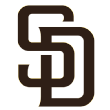
San Diego Padres
Where their farm system ranks: Second
Biggest system strengths: MLB-ready pitching
Biggest system needs: Power bats
The Padres have one of the best systems in the game, so a lack of impact power hitters is a nitpick. One of a number of things they're very deep in is pitchers in the upper levels who could contribute to a big league team this year: MacKenzie Gore, Luis Patino, Adrian Morejon, Ronald Bolanos, Michel Baez, Javy Guerra, David Bednar and, before Tommy John surgery, Andres Munoz and possibly Reggie Lawson.
How they typically draft: Tools and upside
They'll take a lower-upside college player here and there, but the Padres' bread and butter is upside prep players, where they can apply one of the biggest scouting staffs in the game, on an area where there's less data, and with less meaning, than with college players.
Best fits: Robert Hassell, Austin Hendrick, Max Meyer
2020 draft picks: No. 8, No. 34, No. 45, No. 80, No. 109, No. 139
Past five first-round picks: SS CJ Abrams (2019); LHP Ryan Weathers (2018); SS Xavier Edwards (2018); LHP MacKenzie Gore (2017); RHP Cal Quantrill (2016)

Colorado Rockies
Where their farm system ranks: 28th
Biggest system strengths: Lower-minors upside
Biggest system needs: MLB-ready pitching
It's worked out that beyond a couple of big-league-ready prospects (Brendan Rodgers and Sam Hilliard), almost none of the higher-end prospects in this system have played in Double-A yet, particularly on the pitching side, but there's a nice group of talent that should be getting there soon.
How they typically draft: College sinkerballers
Due to their home park, the Rockies draft only pitchers who show a sinker as an amateur, which is even easier to pick out now that so many pitchers throw their four-seam fastball only primarily up in the strike zone.
Best fits: Emerson Hancock, Robert Hassell, Tyler Soderstrom
2020 draft picks: No. 9, No. 35, No. 46, No. 81, No. 110, No. 140
Past five first-round picks: 1B Michael Toglia (2019); LHP Ryan Rolison (2018); 1B Grant Lavigne (2018); RHP Riley Pint (2016); RHP Ryan Tyler (2016)
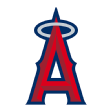
Los Angeles Angels
Where their farm system ranks: 21st
Biggest system strengths: High-ceiling outfielders
Biggest system needs: Upper-minors arms
The Angels went conservative in their first draft under GM Billy Eppler, but have gone risky since then to positive early returns, with Jo Adell, Jordyn Adams and Brandon Marsh their three top prospects. With the graduations of Shohei Ohtani, Griffin Canning and Jose Suarez followed by the trade of three minor league pitchers for Dylan Bundy, the inventory of big league pitching prospects has run mostly dry, although Patrick Sandoval probably helps this year.
How they typically draft: Up-the-middle athletes
Los Angeles still has a good shot to take an athletic prep bat with its first pick, but after the financially focused moves by owner Arte Moreno and with Eppler in the last year of his deal, many in the industry expect a college pick this year.
Best fits: Robert Hassell, Austin Hendrick, Max Meyer
2020 draft picks: No. 10, No. 82, No. 111, No. 141
Past five first-round picks: SS Will Wilson (2019); OF Jordyn Adams (2018); OF Jo Adell (2017); C Matt Thaiss (2016); C Taylor Ward (2015)
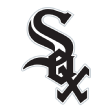
Chicago White Sox
Where their farm system ranks: Eighth
Biggest system strengths: Power bats
Biggest system needs: MLB-ready pitching
A number of players in the White Sox's top 10 prospects have plus power potential in the big leagues: Luis Robert, Andrew Vaughn, Zack Collins, Micker Adolfo. Michael Kopech is a top-shelf starter who is big league ready, but the next on that list is down in the common 40 Future Value area.
How they typically draft: College hitters
The White Sox are under the direction of a new scouting director, but Mike Shirley was an internal hire, so the tendency to take college power bats is likely to continue.
Best fits: Patrick Bailey, Heston Kjerstad, Reid Detmers
2020 draft picks: No. 11, No. 47, No. 83, No. 112, No. 142
Past five first-round picks: 1B Andrew Vaughn (2019); SS Nick Madrigal (2018); 3B Jake Burger (2017); C Zach Collins (2016); RHP Zack Burdi (2016)

Cincinnati Reds
Where their farm system ranks: 19th
Biggest system strengths: Up-the-middle bats
Biggest system needs: MLB-ready pitching
Most of the Reds' top prospects are position players with defensive value (Tyler Stephenson, Jose Garcia, Jonathan India, Mike Siani, Stu Fairchild) or power arms who aren't yet big-league-ready (Hunter Greene, Nick Lodolo, Lyon Richardson).
How they typically draft: Power and athletes
Plus raw power is common among Stephenson, India, Rece Hinds, Tyler Callihan and Bren Spillane from the early rounds of the past few drafts, but most of the players who don't fit into that mold are plus athletes.
Best fits: Max Meyer, Austin Hendrick, Tyler Soderstrom
2020 draft picks: No. 12, No. 48, No. 65, No. 84, No. 113, No. 143
Past five first-round picks: LHP Nick Lodolo (2019); 3B Jonathan India (2018); RHP Hunter Greene (2017); SS Jeter Downs (2017); 3B Nick Senzel (2016)
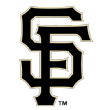
San Francisco Giants
Where their farm system ranks: 16th
Biggest system strengths: Upside hitters
Biggest system needs: Quality pitching depth
The Giants' recent top picks (Joey Bart, Hunter Bishop, Heliot Ramos) and their recent international haul (Marco Luciano, Alex Canario, Luis Matos, Luis Toribio) all offer big upside at the plate and in the field, a nice base for a rebuilding club that needs to produce some impact to compete with the Dodgers in the NL West. The depth of potential contributing arms isn't quite there yet.
How they typically draft: Value
With a relatively new GM in Farhan Zaidi and scouting director in Michael Holmes, it isn't clear where they lean yet, but they look to be demographically agnostic.
Best fits: Austin Hendrick, Tyler Soderstrom, Mick Abel
2020 draft picks: No. 13, No. 49, No. 67, No. 68, No. 85, No. 114, No. 144
Past five first-round picks: OF Hunter Bishop (2019); C Joey Bart (2018); OF Heliot Ramos (2017); RHP Phil Bickford (2015); 1B Chris Shaw (2015)
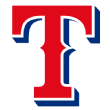
Texas Rangers
Where their farm system ranks: 25th
Biggest system strengths: Quality depth
Biggest system needs: Top 100-type prospects
The Rangers' system is very deep in intriguing, possible everyday-type prospects, but none broke through this offseason to make my top 100. Top prospect Nick Solak should break camp with the big club and will lose prospect eligibility soon.
How they typically draft: Up-the-middle bats
The Rangers have historically and mostly chased upside and athletes in the past, but they took a couple of college hitters up top last year and are rumored to be looking to do that again.
Best fits: Nick Loftin, Justin Foscue, Garrett Crochet
2020 draft picks: No. 14, No. 50, No. 86, No. 115, No. 145
Past five first-round picks: 3B Josh Jung (2019); 3B Davis Wendzel (2019); RHP Cole Winn (2018); OF Bubba Thompson (2017); SS Chris Seise (2017)

Philadelphia Phillies
Where their farm system ranks: 22nd
Biggest system strengths: Up-the-middle bats
Biggest system needs: Quality depth
The Phillies' system isn't exceptionally deep, but it's strong in hitters with some defensive value, like Bryson Stott, Luis Garcia, Simon Muzziotti and Mickey Moniak. You also could include Alec Bohm if you believe third base has the defensive value of center field in the WAR calculation.
How they typically draft: College performers
The Phillies added a new scouting director this year in Brian Barber, who came from the Yankees, like manager Joe Girardi. Before his hire, the Phillies leaned college at their top picks, but they may now lean more demographic agnostic, like the Yankees have.
Best fits: Nick Bistko, Tyler Soderstrom, Pete Crow-Armstrong
2020 draft picks: No. 15, No. 87, No. 116, No. 146
Past five first-round picks: SS Bryson Stott (2019); 3B Alec Bohm (2018); OF Adam Haseley (2017); OF Mickey Moniak (2016); SS Cornelius Randolph (2015)
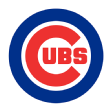
Chicago Cubs
Where their farm system ranks: 24th
Biggest system strengths: Up-the-middle bats
Biggest system needs: Starting pitchers
Six of the Cubs' top 10 prospects (and all of the top three) fit best at one of the up-the-middle defensive positions, and all have a real chance to be everyday players; the two lowest-rated prospects of the six are just 16 years old. Of the pitchers rated above 40 Future Value, only two (Cory Abbott and Kohl Franklin) are likely to stay as starters if/when they reach the big leagues, so there could continue to be a young starting pitcher inventory problem in Chicago.
How they typically draft: College pitchers
The Cubs are under the guidance of Dan Kantrovitz (formerly of the A's and Cardinals) for this year's draft. He has skewed toward college players in the drafts he has run in the past and the Cubs took college pitchers at a higher-than-average rate under the previous amateur scouting regime, but rumors have the Cubs targeting upside with their first couple of picks this year.
Best fits: Mick Abel, Nick Bitsko, Jordan Walker
2020 draft picks: No. 16, No. 51, No. 88, No. 117, No. 147
Past five first-round picks: RHP Ryan Jensen (2019); SS Nico Hoerner (2018); LHP Brendon Little (2017); RHP Alex Lange (2017); 2B/OF Ian Happ (2015)
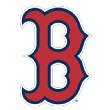
Boston Red Sox
Where their farm system ranks: 27th
Biggest system strengths: Upper-minors inventory
Biggest system needs: Power arms
A number of the club's top 10 prospects are ready to contribute either in 2020 or by midway through 2021: 2B Jeter Downs, 3B Bobby Dalbec, RHP Bryan Mata, RHP Tanner Houck and CF Jarren Duran. Mata and RHP Noah Song both throw hard, but there isn't much bulk in terms of mid-90s, bat-missing type arms who are likely to have longish big league careers.
How they typically draft: Value
The Red Sox have been staying away from prep arms with early picks, but the hiring of Chaim Bloom (who had a history of taking prep pitchers with Tampa Bay) and rumors this year of Boston targeting a couple of prep righties suggest that may change.
Best fits: Garrett Mitchell, Garrett Crochet, Mick Abel
Where their farm system ranks: 27th
2020 draft picks: No. 17, No. 89, No. 118, No. 148
Past five first-round picks: 3B Triston Casas (2018); RHP Tanner Houck (2017); LHP Jay Groome (2016); OF Andrew Benintendi (2015); INF Michael Chavis (2014)
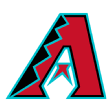
Arizona Diamondbacks
Where their farm system ranks: Seventh
Biggest system strengths: Up-the-middle bats
Biggest system needs: Power bats
Under GM Mike Hazen, the D-backs have prioritized shortstops and center fielders, which is where you find the most athletic players, just like in Little League. Most of them are hit-first types from Latin America with longer track records of hitting, particularly in the past two draft classes. One reason first baseman Seth Beer was included in the Zack Greinke deal is because the system doesn't have much in the way of likely major league contributors with plus game power.
How they typically draft: Contact and defense
This has been the trend in their high picks for the past two seasons (Corbin Carroll, Alek Thomas, second round in 2018) and rumored targets this year (Robert Hassell, Pete Crow-Armstrong). Arizona also likes pitchers with high spin rates and high arm slots.
Best fits: Hassell, Crow-Armstrong, Nick Bitsko
2020 draft picks: No. 18, No. 33, No. 90, No. 119, No. 149
Past five first-round picks: OF Corbin Carroll (2019); LHP Blake Walston (2019); RHP Brennan Malone (2019); RHP Drey Jameson (2019); 2B Matt McLain (2018)

New York Mets
Where their farm system ranks: 18th
Biggest system strengths: Upside infielders
Biggest system needs: Outfielders
The Mets' top four prospects are all infielders and are in the top 150 or so in the game. With Pete Alonso, Jeff McNeil, Robinson Cano and Amed Rosario in the current infield, the organization is all set in that department for a while. There isn't an outfielder in the system who projects as more than a role player, but luckily the big league outfield is on the young side.
How they typically draft: Upside high schoolers
In GM Brodie Van Wagenen's first draft, the team went with upside high school types in its first three picks and also went over slot significantly enough that the Mets had to resort to seniors earlier than any other team to make their bonus pool work. It's unclear if they'll still have that approach this year.
Best fits: Mick Abel, Garrett Crochet, Justin Foscue
2020 draft picks: No. 19, No. 52, No. 69, No. 91, No. 120, No. 150
Past five first-round picks: 3B Brett Baty (2019); OF Jarred Kelenic (2018); LHP David Peterson (2017); RHP Justin Dunn (2016); LHP Anthony Kay (2016)
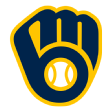
Milwaukee Brewers
Where their farm system ranks: 30th
Biggest system strengths: Upside hitters
Biggest system needs: Quality depth
The Brewers have a shallow system in terms of quality (better than 40 Future Value) prospects, but they do have a good number of hitting prospects with the upside to turn into everyday options. Brice Turang, Tristen Lutz, Mario Feliciano and Eduardo Garcia top that list.
How they typically draft: Performance and traits
The Brewers lean toward players who have either long-term performance or the TrackMan-based characteristics (Ethan Small's and Antoine Kelly's fastball/curveball shape and spin, Tristen Lutz's exit velocities).
Best fits: Garrett Mitchell, Garrett Crochet, Clayton Beeter
2020 draft picks: No. 20, No. 53, No. 92, No. 121, No. 151
Past five first-round picks: LHP Ethan Small (2019); SS Brice Turang (2018); 2B Keston Hiura (2017); OF Tristen Lutz (2017); OF Corey Ray (2016)

St. Louis Cardinals
Where their farm system ranks: 15th
Biggest system strengths: MLB-ready inventory
Biggest system needs: Middle infield
Dylan Carlson, Andrew Knizner, Genesis Cabrera, Lane Thomas and Junior Fernandez are all in the top dozen prospects for the Redbirds and should contribute in 2020. The top middle-infield prospects in the system are either utility guys or lottery-ticket types right now.
How they typically draft: Value
The Cardinals lean college but will mix in a prep pick or two in the first few rounds, once again falling into a value-based approach.
Best fits: Justin Foscue, Cade Cavalli, Garrett Crochet
2020 draft picks: No. 21, No. 54, No. 63, No. 70, No. 93, No. 122, No. 152
Past five first-round picks: LHP Zack Thompson (2019); 3B Nolan Gorman (2018); RHP Griffin Roberts (2018); SS Delvin Perez (2016); OF Dylan Carlson (2016)
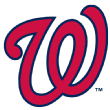
Washington Nationals
Where their farm system ranks: 29th
Biggest system strengths: High risk/reward prospects
Biggest system needs: Quality depth
The Nats don't have a very good system and haven't had one for a while, but they have a better-than-average amount of real prospects who have star upside, such as Carter Kieboom, Jackson Rutledge, Seth Romero and Mason Denaburg. They've developed (albeit briefly in some cases) Stephen Strasburg, Anthony Rendon, Bryce Harper, Victor Robles, Juan Soto and Trea Turner.
How they typically draft: Upside and velocity
Given this approach, the Nats tend to take Scott Boras clients, power arms, potential relievers and players recovering from injury, as they also tend to pick at the back of Round 1.
Best fits: Cole Wilcox, Jordan Westburg, Mick Abel
2020 draft picks: No. 22, No. 55, No. 71, No. 94, No. 123, No. 153
Past five first-round picks: RHP Jackson Rutledge (2019); RHP Mason Denaburg (2018); LHP Seth Romero (2017); SS Carter Kieboom (2016); RHP Dane Dunning (2016)

Cleveland Indians
Where their farm system ranks: 12th
Biggest system strengths: Lower-minors upside
Biggest system needs: MLB-ready bats
Cleveland's international program stocks its low minors with talented young prospects every year, usually with hit-first, up-the-middle type position players and athletic, upside pitchers for lower bonuses. Cleveland's draft approach, which often comes with extra picks, also stocks the lower minors better than most clubs do.
How they typically draft: Young high school bats and showcase performers
The Indians have the most defined preference of prospects of any team in the draft. They tend to take 17-year-old prep hitters and prep prospects who performed better over the summer than the spring, with athleticism often a nice extra trait that pops up in their higher picks.
Best fits: Pete Crow-Armstrong, Jared Kelley, Ed Howard
2020 draft picks: No. 23, No. 36, No. 56, No. 95, No. 124, No. 154
Past five first-round picks: RHP Daniel Espino (2019); C Bo Naylor (2018); RHP Ethan Hankins (2018); RHP Lenny Torres (2018); OF Will Benson (2016)

Tampa Bay Rays
Where their farm system ranks: First
Biggest system strengths: Lots of everyday-quality prospects
Biggest system needs: Catching
The Rays have the best farm system in baseball by a solid margin, so they've got a little bit of just about anything you can think of. Ronaldo Hernandez is a solid prospect who may stick behind the plate and Michael Perez will be the big league backup this year, but there isn't a ton of impact at the position in the system right now.
How they typically draft: Value
The Rays are not afraid of taking a prep righty high in the draft, which many clubs try to avoid. They trend to upside and contact-first college middle infielders, which is an odd combination, but it has worked for them. Rival clubs think they'll take a college player with their first pick to set up a high school overpay in the comp round.
Best fits: Justin Foscue, Cole Wilcox, Clayton Beeter
2020 draft picks: No. 24, No. 37, No. 57, No. 96, No. 125, No. 155
Past five first-round picks: SS Greg Jones (2019); RHP JJ Goss (2019); RHP Seth Johnson (2019); LHP Matt Liberatore (2018); LHP Shane McClanahan (2018)

Atlanta Braves
Where their farm system ranks: Third
Biggest system strengths: MLB-ready talent
Biggest system needs: Power bats
The Braves are flush with center fielders (Drew Waters, Cristian Pache), catchers (Alex Jackson, William Contreras), righties (Ian Anderson, Kyle Wright, Bryse Wilson) and lefties (Tucker Davidson, Kyle Muller) who are either big league ready, or could be ready in the first half of 2021. Jackson is the only plus power production type in the system who is likely to have a big league future, but 2019 draftee Bryce Ball is off to a quick start.
How they typically draft: Up-the-middle bats
After Atlanta took Shea Langeliers, Braden Shewmake and Beau Philip with its first three picks last year, something that has been speculated was confirmed: This new regime likes to have margin for error in terms of athleticism and positional value with hitting prospects.
Best fits: Justin Foscue, Nick Loftin, Clayton Beeter
2020 draft picks: No. 25, No. 97, No. 126, No. 156
Past five first-round picks: C Shea Langeliers (2019); SS Braden Shewmake (2019); RHP Carter Stewart (2018); RHP Kyle Wright (2017); RHP Ian Anderson (2016)
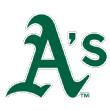
Oakland Athletics
Where their farm system ranks: 14th
Biggest system strengths: MLB-ready impact talent
Biggest system needs: Outfielders
The guys at the top of the A's system (Jesus Luzardo, A.J. Puk, Sean Murphy, Jorge Mateo) are all MLB ready and will likely play in the big leagues this year for a contending club. There isn't an outfielder in the system better than a 40 FV, though Mateo can play all three up-the-middle positions if needed.
How they typically draft: High-ceiling types
For a while in the Moneyball days, the A's led the charge with a college-only approach. They slowly came off that, then took an extended dip in the other end of the pool, taking upside/risk bets in Austin Beck and Kyler Murray in the first round, with last year's top choice Logan Davidson much closer to the upside end of the pool. They still lean college, but the A's also lean on scouting reports and traditional upside within that group of players.
Best fits: Jordan Westburg, Bryce Jarvis, C.J. Van Eyk
Where their farm system ranks: 14th
2020 draft picks: No. 26, No. 58, No. 98, No. 127, No. 157
Past five first-round picks: SS Logan Davidson (2019); OF Kyler Murray (2018); OF Austin Beck (2017); SS Kevin Merrell (2017); LHP A.J. Puk (2016)

Minnesota Twins
Where their farm system ranks: 13th
Biggest system strengths: Upper-minors impact talent
Biggest system needs: Middle infield
All of the Twins' top seven prospects finished 2019 in Double-A or higher, so there's even more help on the way in 2020 and 2021. Minnesota has a deep system, but there isn't a true middle infielder in the top dozen prospects.
How they typically draft: Toolsy college players
The Twins tend to target collegiate players with clear carrying tools, like Matt Wallner's raw power, Matt Canterino's power fastball/curveball combo, Seth Gray's raw power or Will Holland's speed, all from the 2019 draft.
Best fits: Garrett Mitchell, Jordan Westburg, Clayton Beeter
2020 draft picks: No. 27, No. 59, No. 128, No. 158
Past five first-round picks: SS Keoni Cavaco (2019); OF Matt Wallner (2019); OF Trevor Larnach (2018); SS Royce Lewis (2017); OF Brent Rooker (2017)
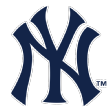
New York Yankees
Where their farm system ranks: Fifth
Biggest system strengths: Up-the-middle bats
Biggest system needs: Left-handed pitching
Both the domestic and international amateur scouting groups like up-the-middle type athletic position players and both groups are in the top five or so in terms of return. The system is top notch, specifically in upside prospects of this type, but there isn't a lefty pitcher in the top 20 of the system.
How they typically draft: Value
The Yankees tend to look at a college/high school mix for the first couple of rounds, then go heavily college, often smaller colleges later in the draft. They're opportunistic across demographics, like the Dodgers, and both clubs will pounce on any undervalued prospects.
Best fits: Clayton Beeter, Bryce Jarvis, Slade Cecconi
2020 draft picks: No. 28, No. 99, No. 129
Past five first-round picks: SS Anthony Volpe (2019); LHP T.J. Sikkema (2019); C Anthony Seigler (2018); RHP Clarke Schmidt (2017); OF Blake Rutherford (2016)
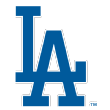
Los Angeles Dodgers
Where their farm system ranks: Fourth
Biggest system strengths: Impact MLB-ready talent
Biggest system needs: Upper-minors outfielders
The top of the Dodgers' system is all big league ready: Gavin Lux, Dustin May, Keibert Ruiz, Tony Gonsolin, Brusdar Graterol and, possibly by mid-2021, Josiah Gray. D.J. Peters is the only possible short-term help on the horizon for the outfield, but that's picking nits on this top-shelf system.
How they typically draft: Value
The Dodgers lean on a deep, experienced and talented scouting group that also embraces progressive methods; many think it's one of the best five in the game. They will pounce on whatever sort of player seems to be undervalued at the time. Last year, it was college bats in Kody Hoese and Michael Busch, while this year's draft also is deep in college players.
Best fits: Justin Foscue, Clayton Beeter, Cade Cavalli
2020 draft picks: No. 29, No. 60, No. 66, No. 100, No. 130, No. 159
Past five first-round picks: 3B Kody Hoese (2019); 2B Michael Busch (2019); RHP J.T. Ginn (2018); OF Jeren Kendall (2017); SS Gavin Lux (2016)

Houston Astros
Note: Astros forfeited first- and second-round picks as part of their penalty for illegally stealing signs.
Where their farm system ranks: 26th
Biggest system strengths: Upper-minors arms
Biggest system needs: Upper-minors bats
The Astros are flush with pitching in the upper minors, even after trading two premium pieces in the Zack Greinke deal. Forrest Whitley and Jose Urquidy are both on my top 100 and Bryan Abreu might open in the big league bullpen, while Cristian Javier and Brandon Bielak might also make appearances when length is needed. Beyond Abraham Toro, there isn't much in the way of immediate help to the lineup. Luckily, the Astros' lineup doesn't need much short-term help.
How they typically draft: High spin rates and exit velocity
The Astros were long on the bleeding edge of having fewer scouts, relying on data, skewing toward high exit velos and high spin rates, but with former Rays exec James Click as the new GM, they could lean back toward some more traditional ways that Tampa Bay had embraced.
Best fits: Masyn Winn, Anthony Servideo, Zach DeLoach
2020 draft picks: No. 72, No. 101, No. 131, No. 160
Past five first-round picks: C Korey Lee (2019); OF Seth Beer (2018); RHP J.B. Bukauskas (2017); RHP Forrest Whitley (2016); SS Alex Bregman (2015)
